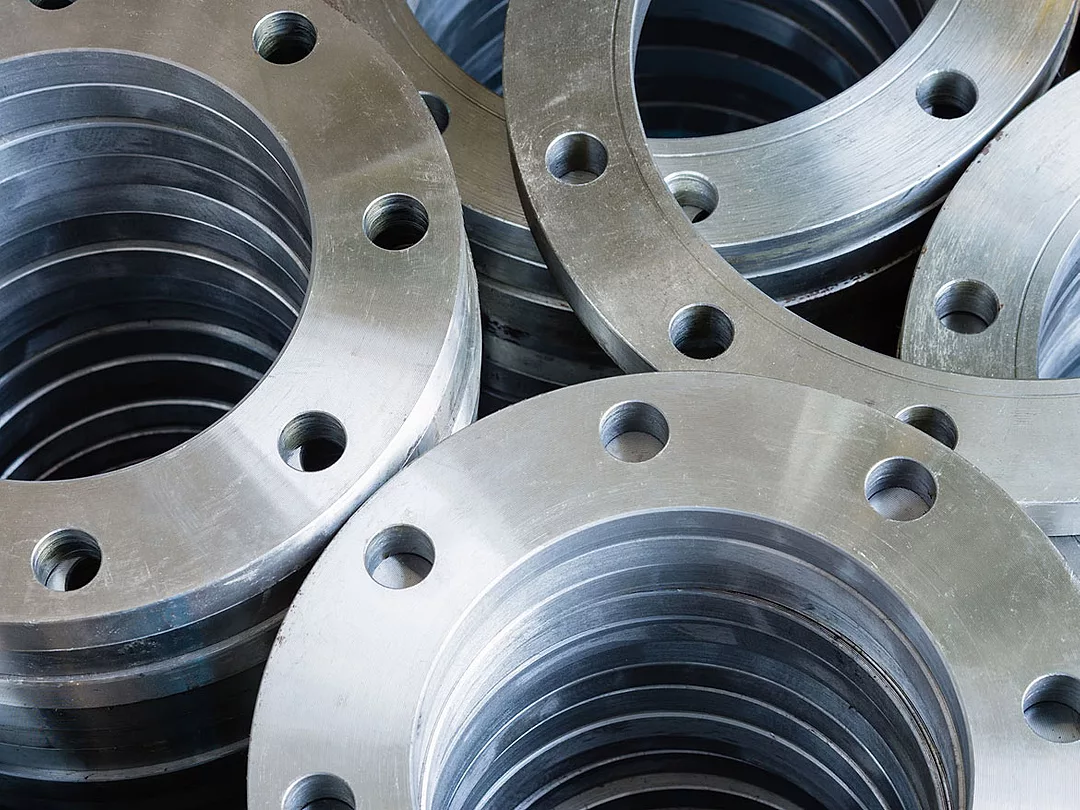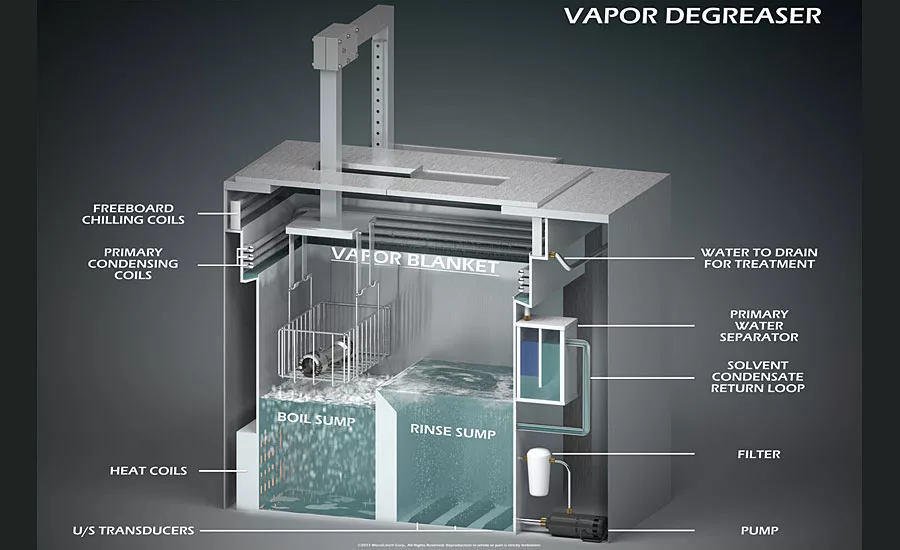Future-Proof Your Finishing With Sustainable Cleaning



Cleaning is an important step within the production of metal parts. Effective cleaning ensures parts attain the correct surface finish before further processes like coating, adhesion or plating are undertaken. For many companies, tried and tested cleaning processes are already in place, however with new regulations on the horizon, they may require some changes.
More and more governments and regulatory agencies are requiring greener chemistries and manufacturing processes. For some fabricators this means their well-established cleaning methods are no-longer suitable. They must seek out new alternate cleaning solutions to ensure they continue to clean effectively, but also meet emerging regulatory requirements, both now and into the future.
What’s Changing?
For manufacturers today it is no longer enough to produce high-quality parts at competitive prices. Fabricators must now minimize negative environmental impact, conserve energy and protect natural resources all while safeguarding the health and well-being of their employees. Finding a cleaning solution that meets all the criteria of sustainability, reliability and cost effectiveness can be difficult, particularly as new rules and requirements emerge.
A recent example of this is the use of n-Propyl Bromide (nPB). nPB has been widely used as an effective and reliable industrial cleaner for over 30 years. It replaced other environmentally questionable chemistries such as CFC-113, methyl chloroform, hydrochlorofluorocarbons (HCFCs) and perfluorocarbons (PFCs), which are found in many cleaning solutions.
nPB, however, is now under review by the U.S. Environmental Protection Agency (EPA), Occupational Health and Safety Administration, (OSHA) and American Conference of Governmental Industrial Hygienists (ACGIH). Its use is under scrutiny, and the restrictions around it continue to grow.
nPB is not the only solvent of concern. Others in question include perchloroethylene (Perc) and trichloroethylene (TCE), which are currently banned or restricted in some countries. In the United States, the EPA added TCE and Perc to their environmental watch list. This means that legacy fluids that have been used effectively for many years will likely need to be replaced with greener alternatives. Fabricators are now faced with the challenge of finding new replacement fluids that must not only meet regulatory demands, but also provide reliable and consistent cleaning in their existing equipment. Most significantly, the new cleaning fluids must also be safe to workers, their health and the environment in which we live.
It is important for metal fabricators to start now and to proactively upgrade from the less planet-friendly cleaning fluids to more sustainable modern alternatives. By taking action now they can ready themselves to comply with not only current regulations, but also prepare themselves to meet any additional regulations established later.
What’s the Alternative?
The use of sustainable cleaning fluids and methods plays an important role in meeting the sustainability challenge. But what is the alternative to outdated chlorinated and brominated solvents, like TCE and nPB that contribute to ground water and air quality problems?
One solution that is paving the way for sustainable cleaning is vapor degreasing. It is a safe and cost-effective option, and when used with the advanced, new cleaning fluids, meets the objective of sustainability. Vapor degreasing is being more widely utilized within the industrial sector because it readily complies with the rising number of environmental laws regulating cleaning fluid use and worker safety.
There have been significant advancements in industrial cleaning fluids in recent years, and modern vapor degreasing cleaning fluids have impressive green credentials. The replacement cleaning fluids not only comply with strict new environmental regulations, but they are lab-tested and analyzed to ensure the cleaning results are reliable, consistent and just as good, if not better, than legacy cleaning fluids like nPB or TCE.
These game-changing cleaning fluids use HFO (hydrofluoroolefin) chemistries. This means they are environmentally sustainable with a low Global Warming Potential (GWP). The GWP of a cleaning fluid is a measurement of the atmospheric lifetime of the fluid or its gaseous vapors. The longer a trapped gas absorbs infrared radiation in the atmosphere, the more it may contribute to global warming and climate change. The new cleaning fluids typically have a low GWP of 3 or less. By comparison, the older solvents used in cleaning fluids, like HCFCs, had average GWP ratings in the thousands.
Does Vapor Degreasing Do the Job?
At the end of the day, parts need to be finished effectively. They therefore have high cleanliness requirements in order to reach quality standards. Whether tested using black light inspection, particle count, water break or other analysis, they must meet customers’ cleanliness conditions. Next-generation cleaning fluids thoroughly clean surfaces and displace stubborn soils to meet those standards.
New sustainable cleaning fluids are normally a mixture of compounds that can include hydrocarbons like mineral spirits, isopropanol and ethanol. The compounds are combined to ensure they are effective at removing contaminant without damaging parts surfaces. Depending on how the compounds combine determines the cleaning fluids’ effectiveness and material compatibility. Fluids are mixed, blended or custom formulated to successfully remove a specific soil from a specific substrate and maximize cleaning efficiency. Modern vapor degreasing fluids are formed to effectively dissolve contaminants including machining and stamping oils, and thick grease. Also waxes, baked-on resins, corrosion protection agents and esters. They also remove soils like drawing compounds, spinning lubricants, buffing compounds and fingerprints from a range of materials including stainless steel, copper, brass, aluminum, nylon, polyester and polyethylene without damage.
What About Safety Standards?
When looking for sustainable, long-term cleaning solutions, a top priority is always worker safety. Supporting worker health and safety with greener cleaning is paramount. It is important to eliminate chemistries that could be harmful, or are on the list of those under scrutiny, and replace them with a better alternative.
Advanced vapor degreasing fluids have a very good safety profile. Not only are they sustainable in terms of the chemical properties within them, but they have also been proven to be better for worker exposure.
The OSHA-designated time limit or Permissible Exposure Limit (PEL) that workers are exposed to a chemical is far more acceptable for sustainable cleaning fluids than hazardous legacy solvents. The usual PEL for sustainable fluids is 200-250 ppm (parts per million). When compared with TCE, which has a 100-ppm PEL, or nPB, which is rated at just 0.1 ppm by the American Conference of Governmental Industrial Hygienists, it is obvious to see the safety advantages of modern cleaning fluids. They not only preserve air quality by producing fewer emissions to meet stringent regional air quality regulations, but they are also non-flammable, further adding to worker safety.
What Are the Other Environmental Benefits?
Advances in solvent technology have led to cleaning solutions that not only deliver consistent cleaning but are also gentler on the planet as well. Not only do they comply with strict regulations on toxicity, air quality and worker safety, but they also address the problems of hazardous waste management and the conservation of natural resources.
When used in a vapor degreaser, sustainable cleaning fluids are recycled and reused, allowing for hundreds of hours of use before they need to be refreshed or replaced. They do not produce wastewater, which must be filtered, distilled, deionized and osmosis prepped ready for disposal. The vapor degreaser simply concentrates the soils as it works. This reduces waste generation and lowers hazardous waste disposal costs.
Many of the sustainable cleaning fluids have a low boiling point and heat of vaporization. This translates to less energy use, resulting in energy cost savings. It also cuts overall fossil fuel consumption. This results in a lower total carbon emission and less greenhouse gas output. Vapor degreasers also use no water, therefore conserving this vital non-renewable resource.
The Solution to Greener Cleaning
In today’s demanding manufacturing environment, parts must leave the production floor perfectly clean. Without guaranteed cleanliness, further processing like painting and coating may be unsuccessful. What was once a straightforward procedure that was simple, cleaning is now more of a challenge. In a world where safety, compliance and energy efficiency are so important, it is vital to find a future-proof cleaning solution.
Vapor degreasing not only cleans parts effectively, it is one of the most planet-friendly cleaning options available when used with new, sustainable cleaning fluids. It is a cost-effective, consistent and greener cleaning process that can adapt to future changes, whether they are regulatory or environmental. Importantly, it also safeguards workers by allowing employers to put employee health and safety first. When used with highly advanced cleaning fluid, vapor degreasing is the ultimate long-term, sustainable cleaning method.
Looking for a reprint of this article?
From high-res PDFs to custom plaques, order your copy today!




.webp?height=200&t=1695046030&width=200)

